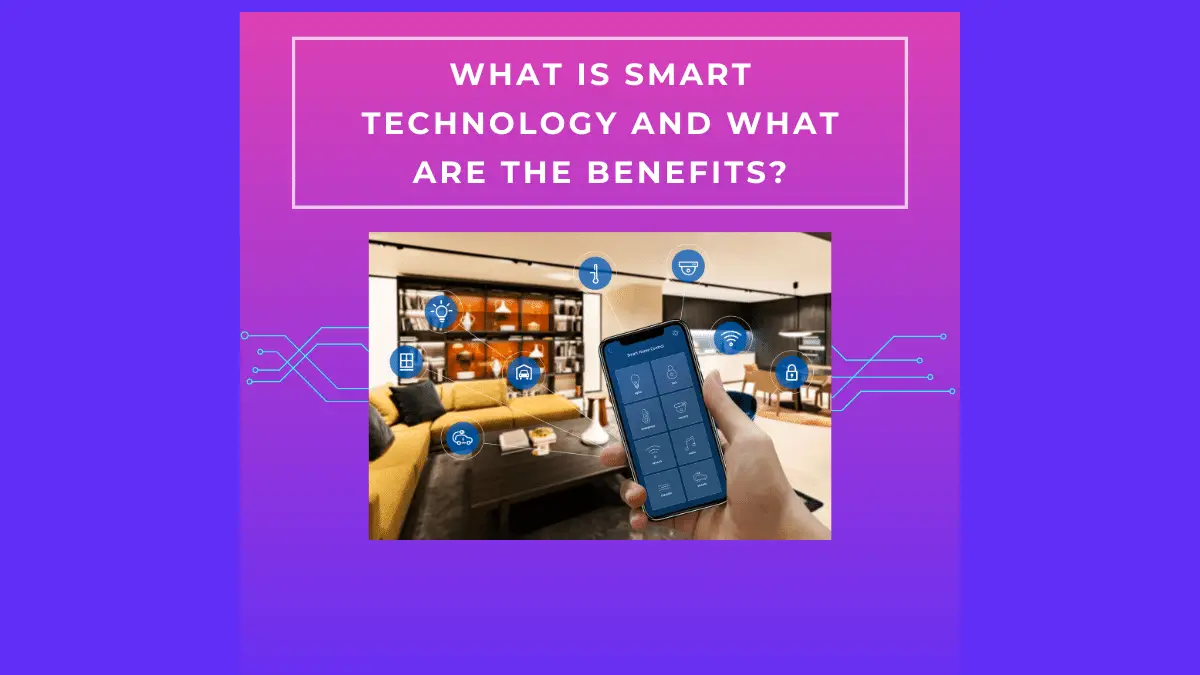Smart technology is the buzzword of the moment, but what is it, really? Smart technology encompasses a range of devices that use internet connectivity to interact with users in novel ways. This can include anything from voice-activated home assistants like Amazon Echo and Google Home to smart thermostats and lightbulbs. So why should you be interested in using these devices in your home or office? Here are just a few of the benefits they offer.
What are the benefits of smart technology?
One of the biggest benefits of smart technology is that it can save you time and make your life more convenient. For example, imagine you’re running late for an important meeting. With a smart assistant like Amazon Echo or Google Home, you can quickly check your calendar, set a reminder for yourself, and even add a meeting to your schedule. This way, you’ll never have to worry about forgetting an important engagement again.
Another benefit of smart technology is that it can help you save money. Smart thermostats, for example, can learn your heating and cooling preferences over time and automatically adjust the temperature to reduce energy consumption. This can lead to lower energy bills and help you to be more eco-friendly.
Finally, smart technology can improve your security and peace of mind. devices like the Nest Cam Indoor Security Camera can provide you with 24/seven live video footage of your home, so you can check in on your kids or pets while you’re away. And if there’s ever an emergency, you can quickly and easily call for help.
What are examples of smart technologies?
As we mentioned above, smart technology can take many different forms. Here are just a few examples of smart devices that you might want to consider using in your home or office:
Amazon Echo: A voice-activated assistant that can play music, answer questions, make calls, and more.
Google Home: Another voice-activated assistant with many of the same features as Amazon Echo.
Nest Cam Indoor Security Camera: A security camera that provides live video footage of your home.
Philips Hue Smart Bulbs: LED light bulbs that can be controlled remotely and used to create different lighting effects.
ecobee Thermostat: A smart thermostat that can save you money on your energy bills.
August Smart Lock: A device that allows you to lock and unlock your door using your smartphone.
Smartboards: These interactive whiteboards can be used for a variety of purposes, including presenting information, leading discussions, and facilitating group work.
Smart Coffee Pot: A coffee pot that can be controlled remotely, so your coffee is always ready when you wake up.
Smart Slow Cooker: A slow cooker that can be controlled remotely, so you can come home to a hot meal.
What are some of the challenges of smart technology?
Like any new technology, there will always be challenges that need to be addressed. Here are a few of the potential challenges associated with smart devices:
– Security and privacy: Because smart devices are connected to the internet, there’s always a possibility that hackers could gain access to them and use them to spy on you or steal your personal information.
– Reliability: Smart devices rely on internet connectivity, so if your Wi-Fi goes down, they may not be able to work properly.
– Compatibility: Not all smart devices are compatible, so you’ll need to do your research to ensure the devices you want to use will work together.
– Setup and configuration: Some smart devices can be difficult to set up and configure, so you may need help from a professional if you’re not comfortable doing it yourself.
Despite these challenges, smart technology can offer a lot of benefits that make it well worth considering for your home or office. If you’re looking for ways to save time, and money, and improve your security and peace of mind, then investing in some smart devices might be the right choice for you.
How smart technology works
As we mentioned above, smart technology relies on internet connectivity to work. This means that all of your devices need to be connected to the internet to communicate with each other.
Typically, this is done through a home network created by using a router. Once your devices are connected to the internet, they can then communicate with each other using a variety of protocols, such as Zigbee, Z-Wave, and Bluetooth.
In some cases, you may also need a separate hub to connect all of your devices. However, many newer devices are able to connect directly to your home network without the need for an additional hub.
Why smart technology is important?
Smart technology is becoming increasingly important as we move into the future. As more and more devices become connected to the internet, it’s important to have a way to manage and control them all.
Smart technology can help you do this by allowing you to remotely access and control your devices from anywhere in the world. This means that you can turn on your lights, start your coffee pot, or unlock your door even if you’re not at home.
In addition, smart technology can also help you save money by reducing your energy consumption. For example, you can use a smart thermostat to adjust your home’s temperature based on whether anyone is home or not. This can help you save money on your energy bills.
Finally, smart technology can also improve your security by allowing you to monitor and control your devices from anywhere. For example, if you have a smart door lock, you can receive alerts whenever someone tries to unlock your door. This way, you can always know who is coming and going from your home.
